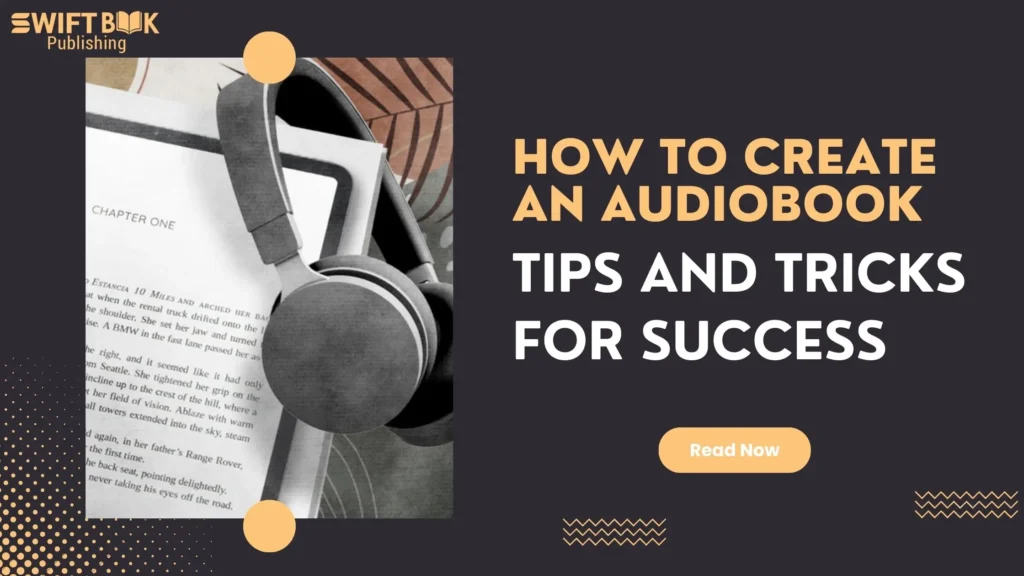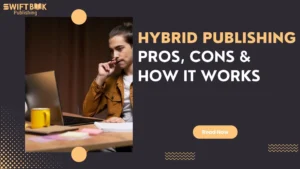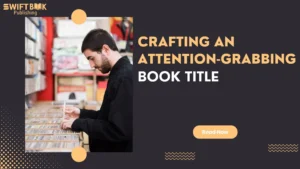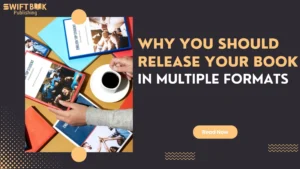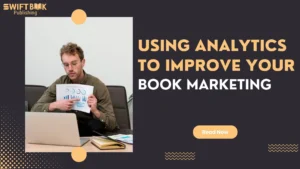Imagine your book reaching thousands of listeners while you sleep. Audiobooks are transforming the way people consume stories, and as an author, you don’t want to miss out. Whether you’re a first-time writer or a seasoned novelist, learning how to create an audiobook can open up a world of new readers—and revenue streams.
From choosing the right narration style to mastering the technical details, this guide will walk you through every step to ensure your audiobook stands out. Ready to turn your words into a listening experience? Let’s get started.
What is an Audiobook?
The first steps to learning how to create an audiobook is learning what it is first. The better grasp you have on it, the faster you can create one. Simply put, it’s a professionally recorded version of a book that you can listen to instead of reading.
Some are narrated by the authors themselves, while others bring in professional voice actors—or even full-cast productions—to make the experience more immersive. Think of it as a movie for your ears, minus the visuals.
How Does an Audiobook Work?
Unlike physical books or even eBooks, audiobooks exist in digital form and can be streamed or downloaded onto devices like your phone, tablet, or smart speaker. They usually come in formats like MP3 or M4B and are available on platforms like Audible, Apple Books, and Google Play Books.
These platforms allow listeners to adjust playback speed, bookmark sections, and even sync progress across multiple devices. Whether you want to binge-listen at double speed or savour every word, audiobooks give you that flexibility.
Why Audiobooks Are Booming
The rise of audiobooks isn’t just a trend—it’s a revolution. More people are tuning in because they fit effortlessly into modern lifestyles. Whether you’re commuting, working out, or just winding down for the night, an audiobook lets you “read” without actually having to sit down with a book. They’re also a game-changer for people with visual impairments or those who struggle with traditional reading. It’s no wonder audiobook sales have surged in recent years, making them an essential format for both readers and authors alike.
Why Create an Audiobook?
With the surge in audiobook popularity, it’s clear that listening is becoming the new reading. But why should you, as an author, invest in creating one? Simple: audiobooks open doors to a much wider audience, boost your earning potential, and strengthen your brand. Whether you’re an indie author or a seasoned writer, turning your book into an audiobook is a strategic move that pays off.
1. Reach More Readers—Without Them Actually Reading
Not everyone has the time (or patience) to sit down and flip through a book. Audiobooks appeal to people who love stories but don’t necessarily read in the traditional sense—think busy professionals, commuters, fitness enthusiasts, and even those who just prefer listening over reading. By transforming your book into an audio format, you tap into an entirely new audience that you wouldn’t reach otherwise.
2. Increase Your Revenue Streams
More formats mean more ways to sell your book. Audiobooks add a new income stream through royalties, often at higher margins than eBooks or paperbacks. Platforms like Audible, Google Play Books, and Findaway Voices offer various pricing and royalty models, allowing authors to profit from multiple sources. And let’s not forget that once your audiobook is out, it keeps earning you passive income—no extra work required.
3. Strengthen Your Brand as an Author
Publishing a book is one thing, but expanding into multiple formats? That positions you as a serious author. Having an audiobook shows that you’re adaptable, forward-thinking, and committed to reaching as many readers as possible. It also increases your credibility, making it easier to get featured on book blogs, podcasts, and media outlets. Plus, if you choose to narrate it yourself, your voice becomes part of your brand, creating a deeper connection with your audience.
Audiobooks vs. Other Book Formats: A Quick Comparison
| Feature | Audiobooks | eBooks | Print Books |
|---|---|---|---|
| Can it be consumed hands-free? | ✅ Yes | ❌ No | ❌ No |
| Great for multitasking? | ✅ Yes | ❌ No | ❌ No |
| Passive income potential? | ✅ High | ✅ Medium | ✅ Medium |
| Accessibility for the visually impaired? | ✅ Excellent | ✅ Moderate | ❌ Low |
| Production cost for authors? | ✅ Moderate | ✅ Low | ❌ High |
Steps to Create an Audiobook
Now that you know why an audiobook is a game-changer, it’s time to dive into how to create an audiobook that captivates listeners. The process involves much more than just reading your book into a microphone—it requires planning, the right tools, and a strategy for distribution. Let’s break it down step by step.
Step 1: Choose the Right Book
Not every book translates well into audio. Dialogue-heavy fiction, self-help books, and memoirs tend to work best because they engage listeners naturally. On the other hand, books with complex formatting, heavy visuals, or charts might not be the best fit unless they can be adapted into spoken descriptions.
Before you even think about recording, make sure your book is fully edited. Editing after recording can be a nightmare, so ensure your manuscript is final. Also, consider pacing—what reads well on paper might feel unnatural when spoken aloud.
Step 2: Decide on Narration Style
Do you want to narrate your own book, or should you hire a professional? That decision depends on your voice, your audience, and your budget.
- Self-Narration – If your book is personal, like a memoir, or if you have a strong, engaging voice, narrating it yourself can add authenticity. However, professional-quality audio is non-negotiable.
- Professional Narrators – If you lack experience or don’t have the right vocal tone, a professional voice actor ensures a polished result. Services like ACX and Findaway Voices offer a range of narrators at different price points.
Pro tip: If you narrate yourself, practice first. Audiobook narration isn’t the same as reading aloud—you need to control pacing, maintain consistent energy, and enunciate every word.
Step 3: Prepare Your Script
A written manuscript isn’t always ready for narration. You need a version formatted for spoken delivery. That means:
- Removing references to visuals or hyperlinks.
- Adding pronunciation notes for tricky words or names.
- Marking pauses and emphasis points to guide the narrator.
- Breaking the script into chapters or sections to make recording easier.
Step 4: Set Up a Recording Space
High-quality audio isn’t just about a good mic. Your recording environment is just as important. Background noise, echo, and inconsistent sound levels can ruin an audiobook.
Here’s what you’ll need:
- A quiet, controlled space – A walk-in closet or a small, carpeted room works best. Avoid large, echoey spaces.
- A quality microphone – USB microphones like the Blue Yeti work well, but for professional results, an XLR mic like the Audio-Technica AT2020 is better.
- A pop filter – Reduces harsh “P” and “S” sounds.
- Headphones – Let you monitor audio while recording.
- Recording software – Free options like Audacity work, but Adobe Audition offers more advanced features.
Step 5: Record Your Audiobook
This is where things get real. Consistency is key—your tone, pacing, and energy levels should stay the same throughout the entire book.
Best practices for recording:
- Speak clearly and naturally—don’t rush or mumble.
- Maintain consistent volume and tone across sessions.
- Take breaks to avoid vocal strain.
- Do multiple takes of tricky sections.
- Record in smaller sections rather than marathon sessions to avoid voice fatigue.
Common mistakes to avoid? Breathing too loudly, inconsistent pacing, and recording in a noisy environment. You don’t want listeners distracted by random background sounds.
Step 6: Edit and Master the Audio
Raw recordings need refining. Editing removes mistakes, balances volume, and enhances clarity. You can hire an editor or do it yourself using software like Audacity or Reaper.
What needs fixing?
- Background noise removal – Any hiss, hum, or static must go.
- Volume consistency – No sudden jumps in loudness.
- Mistake removal – Any slip-ups or long pauses should be cut out.
- Pacing adjustments – Silence between sentences should feel natural.
Mastering ensures your audiobook meets industry standards for platforms like Audible. If you’re unsure how to do this, consider outsourcing to an audio engineer.
Step 7: Choose Audiobook Services
Once your audiobook is polished, it’s time to distribute it. There are multiple audiobook services to choose from, each with different pricing models and reach.
If you want full control over pricing and royalties, non-exclusive platforms like Findaway Voices or Google Play Books might be better options. But if you want maximum exposure, ACX is still the industry giant.
Step 8: Upload and Distribute
Each platform has its own submission guidelines, but in general, you’ll need:
- Your completed audio files (formatted to meet platform specs).
- Cover art (specific size requirements apply, usually 2400 x 2400 pixels).
- Metadata (title, author name, description, keywords).
Want to boost discoverability? Optimize your title, keywords, and description for search engines—just like you would for an eBook. For example, include relevant keywords and a compelling blurb.
Step 9: Market Your Audiobook
Your audiobook is live—now what? Marketing is the difference between a bestseller and a buried book.
Effective marketing strategies include:
- Leveraging your existing audience – Announce your audiobook to your email list and social media followers.
- Offering free previews – Hook listeners with sample chapters.
- Getting reviews – Early reviews on Audible or Apple Books improve visibility.
- Running ads – Swift, Facebook, and Instagram ads can drive sales.
Audiobook Services: Which One is Right for You?
Now that your audiobook is polished and ready, the next big question is where to distribute it. Not all platforms are created equal—some offer broader reach, others provide better royalty options, and a few give you full control over pricing. The right choice depends on your goals, whether that’s maximizing revenue, retaining rights, or reaching the widest possible audience. Let’s break down the top audiobook services and what they offer.
ACX (Audiobook Creation Exchange) – The Audible Powerhouse
If you want your audiobook on Audible, Swift, and Apple Books, ACX is the go-to platform. It offers two main payment models:
- Royalty Share – Split earnings with your narrator (good for those on a budget).
- Pay-for-Production – Hire a narrator upfront and keep full royalties.
While ACX provides access to Audible’s massive audience, it comes with a trade-off—exclusivity agreements if you want the highest royalty rate. If you choose non-exclusive distribution, you’ll get lower royalties but more flexibility to sell elsewhere.
Findaway Voices – Maximum Flexibility
Unlike ACX, Findaway Voices doesn’t lock you into exclusivity. It is distributed to over 40 platforms, including Google Play, Apple Books, and Kobo, making it ideal for authors who want global reach.
Key advantages:
- Competitive pricing – You set your own price (ACX doesn’t allow this).
- Royalty flexibility – No exclusivity requirements.
- Narrator marketplace – Hire professional narrators directly.
While Findaway Voices takes a higher cut per sale than ACX, its wide distribution makes it a strong contender for authors who want control over their pricing and reach.
Author’s Republic – A Simple, Hands-Off Approach
For authors who want wide distribution without handling multiple platforms, Author’s Republic is a great option. It distributes your audiobook across major platforms, including Audible, Google Play, Scribd, and OverDrive (a platform used by libraries).
What makes it stand out?
- Global reach without exclusivity.
- Straightforward revenue split – You earn 70% of what they receive from retailers.
- Less hands-on work – They handle everything for you.
The downside? You don’t have as much pricing control, and there’s no direct communication with retailers. But if you want a simple, no-fuss approach, it’s worth considering.
DIY Options – Full Control Over Your Audiobook
If you don’t want to rely on third-party platforms, you can sell your audiobook directly through your own website or platforms like Shopify. While this gives you 100% control over pricing and royalties, it requires more effort in marketing and distribution.
Best DIY options:
- Sell through your website using tools like Payhip or Gumroad.
- Use Patreon to offer exclusive audiobook content.
- Partner with platforms like Swift Book Publishing for marketing support.
This route works best for authors with an existing audience or those who prefer a direct-to-consumer model rather than relying on marketplaces.
Choosing the Right Audiobook Service
If your goal is maximum exposure with minimal effort, ACX or Author’s Republic are solid choices. If you want control over pricing and wide distribution, Findaway Voices is your best bet. And if you’re an indie author with an engaged audience, selling directly might be the most profitable path.
Final Note
Creating an audiobook might seem daunting at first, but with the right tools, strategy, and a bit of patience, it’s an achievable goal that can significantly boost your reach and income. By following these steps—choosing the right book, perfecting your narration, and leveraging the best audiobook services—you’ll be well on your way to producing a professional-quality audiobook. Remember, the world of audiobooks is growing faster than ever, and your story deserves to be heard. Start your journey today and master how to create an audiobook that captivates listeners everywhere.
Frequently Asked Questions
Q1: How much does it cost to create an audiobook?
A: The cost varies depending on whether you narrate it yourself or hire a professional. Self-narration can cost as little as £200–£500 for equipment and software while hiring a professional narrator can range from £100–£400 per finished hour. Editing and mastering services may add another £500–£1,000. Platforms like ACX offer royalty-share options, which reduce upfront costs but split earnings with the narrator.
Q2: Can I narrate my own audiobook?
A: Yes, you can! Self-narration works well if you have a clear, engaging voice and the ability to maintain consistent energy throughout the recording. It’s especially effective for memoirs or personal stories where your voice adds authenticity. However, if you’re not confident in your vocal skills, hiring a professional narrator is a better option.
Q4: How long does it take to produce an audiobook?
A: The timeline depends on the length of your book and your experience. On average:
- Preparation: 1–2 weeks (formatting the script, setting up equipment).
- Recording: 2–4 weeks (depending on book length and recording pace).
- Editing and mastering: 1–2 weeks.
- Distribution: 1–2 weeks (uploading and approval on platforms like Audible).
- In total, expect 6–10 weeks for a polished audiobook.
Q5: What are the best audiobook services for beginners?
- ACX: Ideal for beginners due to its user-friendly interface and access to Audible’s massive audience.
- Findaway Voices: Offers wide distribution without exclusivity, making it great for authors who want flexibility.
- Author’s Republic: A hands-off option for authors who prefer simplicity and global reach.
- DIY Platforms: If you have an existing audience, selling directly through your website or Patreon can be highly profitable.
Q6: Do I need special equipment to record an audiobook?
A: While you don’t need a professional studio, good equipment is essential. At a minimum, you’ll need:
- A quality microphone (e.g., Blue Yeti or Audio-Technica AT2020).
- A pop filter to reduce harsh sounds.
- Headphones for monitoring audio.
- Recording software like Audacity (free) or Adobe Audition (paid).
- A quiet, echo-free space to record.
